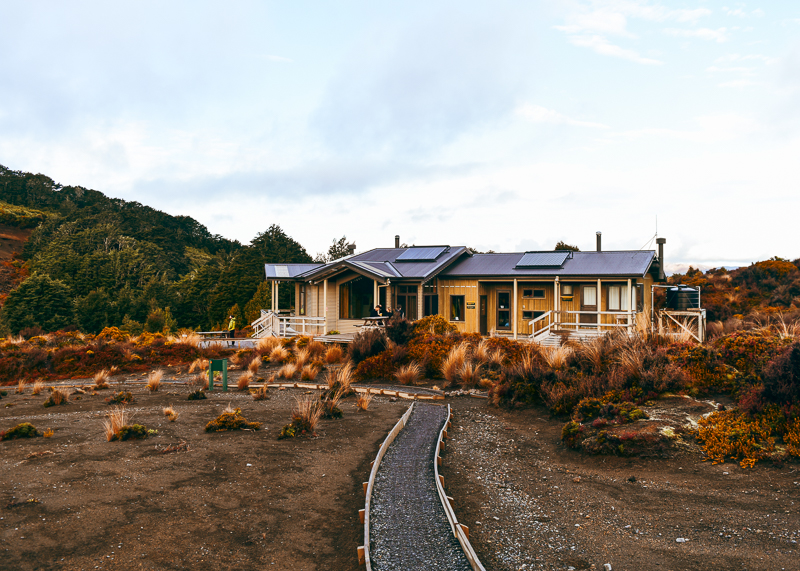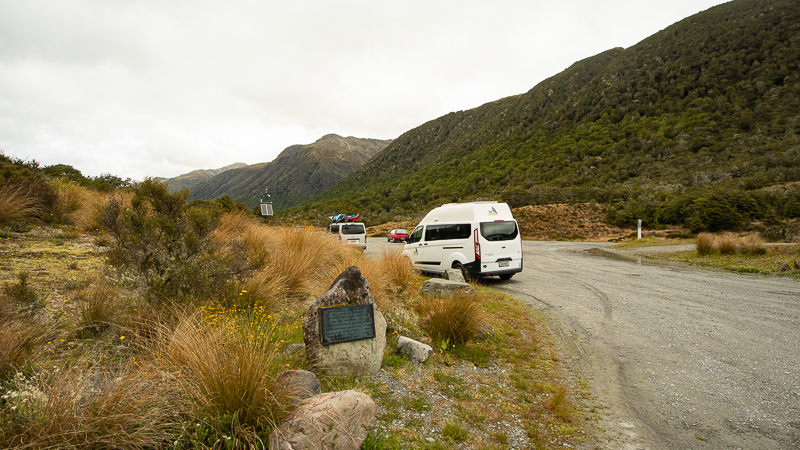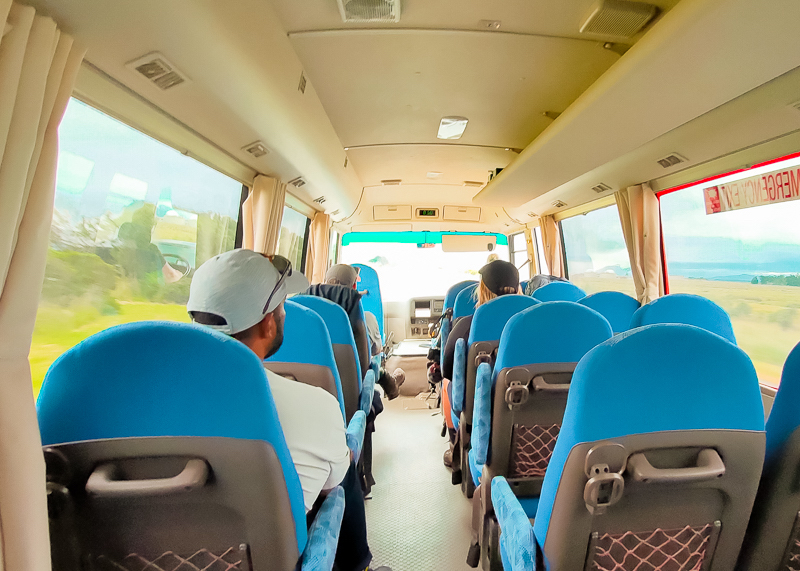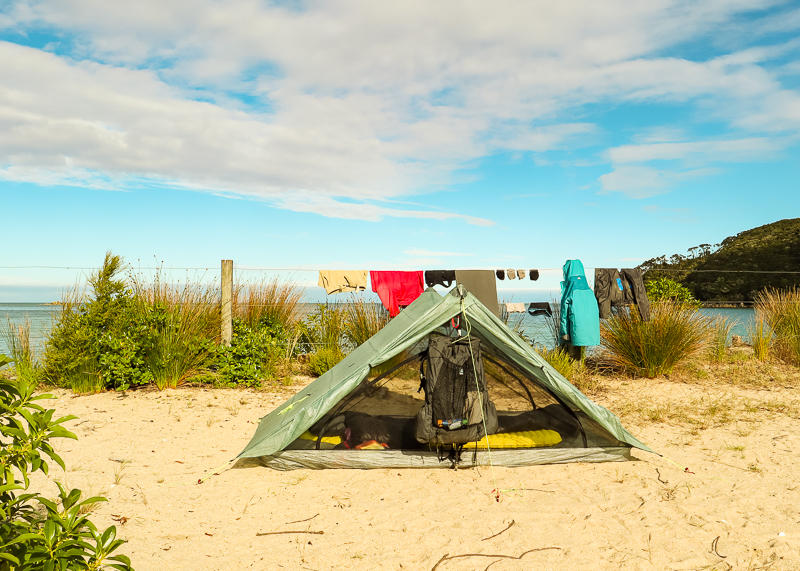Long White Gypsy uses affiliate links and is a member of the Amazon Services LLC Associates Program. If you make a purchase using one of these links, I may receive a small commission at no extra cost to you. See my Privacy Policy for more information.
New Zealand is known throughout the world for its beautiful green spaces, spectacular scenery, soaring mountains and (increasingly) its network of stunning trails which explore it all. However, not all New Zealand hiking trails are easily accessible. In fact, some are almost impossible to get to without some kind of outside help.
And if you’re new to hiking in New Zealand, you may also be very confused by exactly how our vast network of backcountry huts and campsites work (I mean, what exactly is a ‘bookable hut’ anyway?). So if that’s you, in this post we’ll cover exactly how transport & shuttle services to tracks work and how to go about booking hiking shuttles and accommodation for your next adventure.

Transport, Parking and Shuttle Services.
I’ll hold my hand up and admit that I’m also guilty of booking hiking accommodation for multi-day adventures without realising that it’s going to cost me twice as much (or more) to get myself there than it is to actually complete the track.
Wherever possible, I try to aim for tracks which are loops or out-and-back trips, so I know I can park my car in the trailhead carpark, complete my adventure, and return to the same place when I’m finished.

🔥 HOT TIP 🔥
Wherever possible I try to get a friend or family member to drop me off and pick me up so I don’t have to worry about car logistics… but many of NZ’s trails are far too remote for this to be a common occurrence!
But not all tracks are loops or out-and-back routes, and there are a fair few point-to-point tracks which require you to arrange transport to one or both ends in order to start and/or finish your adventure.
If you’re taking your own car to a trail, it’s always a good idea to check ahead to make sure your car is going to be safe in the carpark (and indeed, that there is a carpark). For the more well trafficked trails, there’s likely to be quite a few cars parked in the same carpark and people coming and going all the time so it should be quite safe.

As your experience increases and you attempt more difficult trails you may have to park in a much more remote location where your car is the only one there. In these circumstances, ask on one of the online tramping forums such as the Tramping in New Zealand Facebook page, Tramper.nz, the local tramping club or call ahead to the local Department of Conservation Visitor Centre to find out how safe it is to leave your car parked there.
For point-to-point tracks which begin in one location and end in another, it’s less likely you’ll be able to use your own private car. These tracks require shuttle transfers or other arrangements to travel between the start and finish points.
The DOC website for the track you’re attempting may contain information on local shuttle operators, otherwise locate the nearest DOC Visitor Centre or iSite to the track and ask if they have any suggestions. Alternatively, try asking again on one of the online forums.
If all else fails, a quick google search for “[ Track Name ] Transport Options / Shuttle Operators” should get you what you need … just make sure to check the reviews first!
Whether it’s arranging a private pick up, booking a shuttle, or organising with your hiking group to drop a car at the other end, make sure you understand what kind of track you are hiking before you go and make transport arrangements accordingly.

Staying in Huts.
For those who are new to hiking in New Zealand, it can also be a head scratcher figuring out exactly where to stay on your next multi-day trail.
A quick visit to the Department of Conservation walking and tramping track finder or Plan My Walk app/website will help you to find the perfect track to tackle for your capabilities, and it will also tell you where the huts and campsites are along the way.
New Zealand’s vast network of backcountry huts provide safe refuges from the extremes of weather which often plague these south pacific islands.
Huts usually have a set of bunks, somewhere to cook, a heat source, rainwater tank and toilet nearby, however hut facilities can vary so it always pays to check what to expect (and the cost) on the DOC website for the hut you are planning to visit. Huts are classified from basic to fully serviced, with the cost to stay at a hut varying accordingly (a basic hut could cost as little as $5 per night, but a fully serviced hut can cost $35 or more per night).
Hut fees can be paid in a number of different ways. Some huts have to be booked online first, whereas other huts can be paid for on an as-you-go basis.

First, check if the hut you’re planning to stay at needs to be booked. This is easily done by searching for it on the DOC website or doing a quick Google search for it (this will usually take you straight to the DOC page for that hut). Huts that need to be booked will have a yellow “Book Online” button at the top of the page which will direct you to the booking page.
If you’ve never booked a hut on the DOC website before, you’ll need to create an account to complete your booking. On the booking screen, simply select the date of your trip and how many people will be staying in the hut, then proceed with the booking. You can pay online using a debit or credit card.
For those who are still new to hiking and tramping it may be easiest to purchase backcountry hut tickets. These are single-use tickets which can be bought from DOC Visitor Centres, some other independent retailers such as iSites and even outdoor retailers such as Kathmandu. Make sure you’re purchasing the right kind of ticket for the hut you’re staying at i.e. standard, serviced (ask the retailer – they will be able to check for you).
If you’re more experienced in backcountry adventures and are heading out on a trip most weekends then a backcountry hut pass might be the most economical option for you. Hut passes can be purchased at iSites and DOC Visitor Centres as well as a number of other retailers for as little as $92 for a 6 month pass. Check this link for more information.

Staying at Campsites.
Camping is usually permitted next to most backcountry hut sites (and is often preferable in the case of some vermin-infested refuges) or else at designated campsites not far from the hut. Your hut ticket or pass will cover the costs of pitching your tent at one of these sites.
Other campsites require bookings online in advance, and others still can be paid for on site. The best way to check this in advance is to search for the campsite on the DOC website.
Campsites which have to be paid for on site usually either have an office which is only manned at certain times of the day (and you’ll need to ensure you arrive in time to pay for your site), or else have a self-serve system where you can place the right amount of cash into an envelope and deposit it into a locked box.
Although I’ve encountered electronic payment options at some DOC campsites, don’t bank on this. Always carry cash just in case.

If you are planning to camp on your next multi-day trip, make sure to check for camping restrictions along your route and follow all the basic leave no trace principles including:
- Pack it in, pack it out. Carry out all your waste (including human waste and toilet paper where toilets are not provided);
- Check for fire bans in the area you are hiking and if permitted, dispose of spent ashes properly;
- Respect animals and wildlife you may encounter, including leaving all gates as you find them (many trails traverse private farmland) and not worrying stock.
Final Thoughts: Booking Hiking Shuttles & Accommodation.
Booking hiking shuttles and accommodation is an important part of being prepared for a tramping trip in New Zealand. Embarking on a multi-day trip into the great New Zealand outdoors is always a special kind of adventure. If you’ve planned well and prepared properly you’re sure to have an enjoyable and safe experience.
If you enjoyed this booking hiking shuttles & accommodation post, please take a moment to help me spread the word to other trampers and hikers by sharing it on Pinterest or social media.


